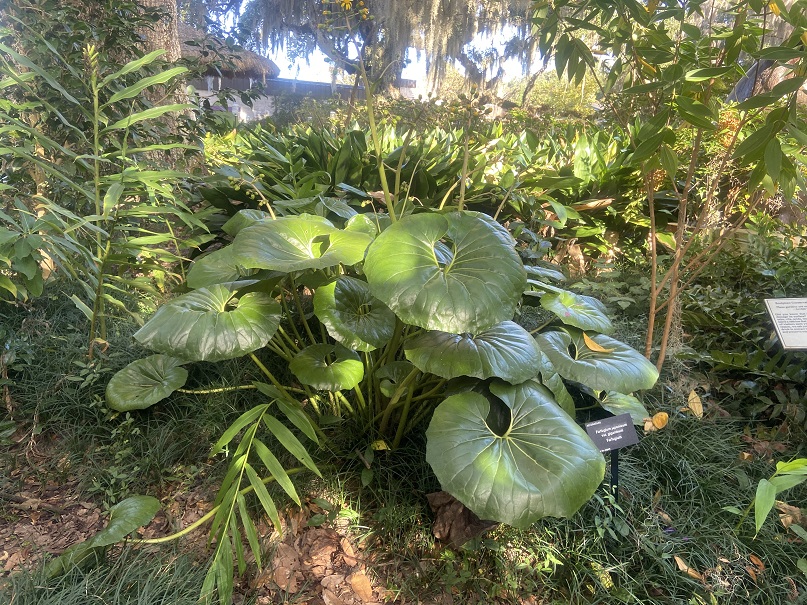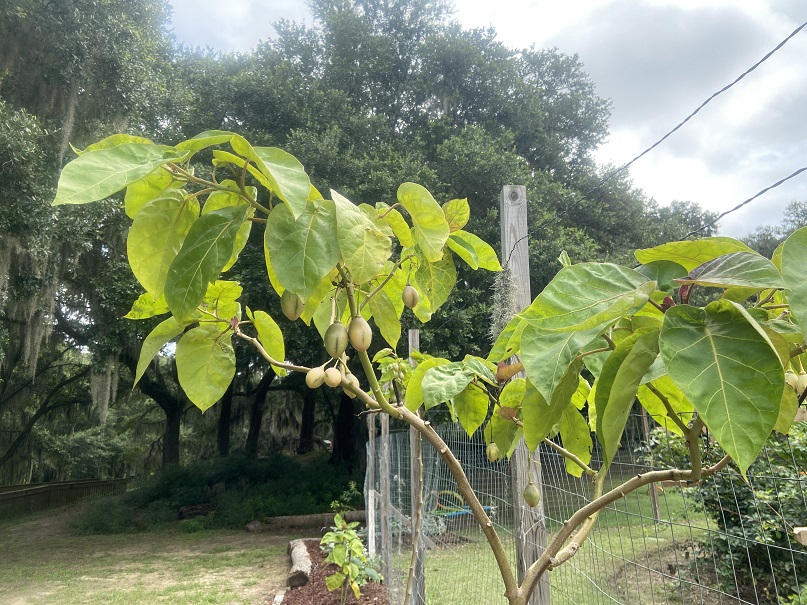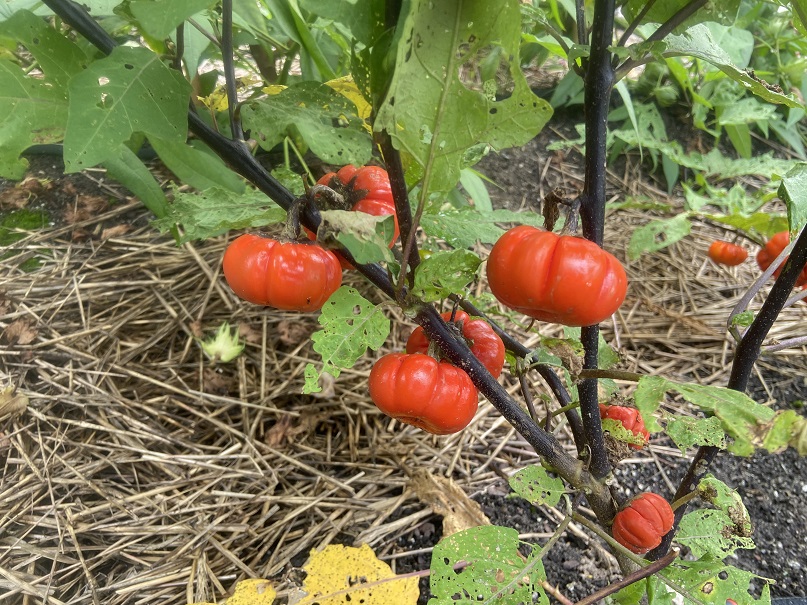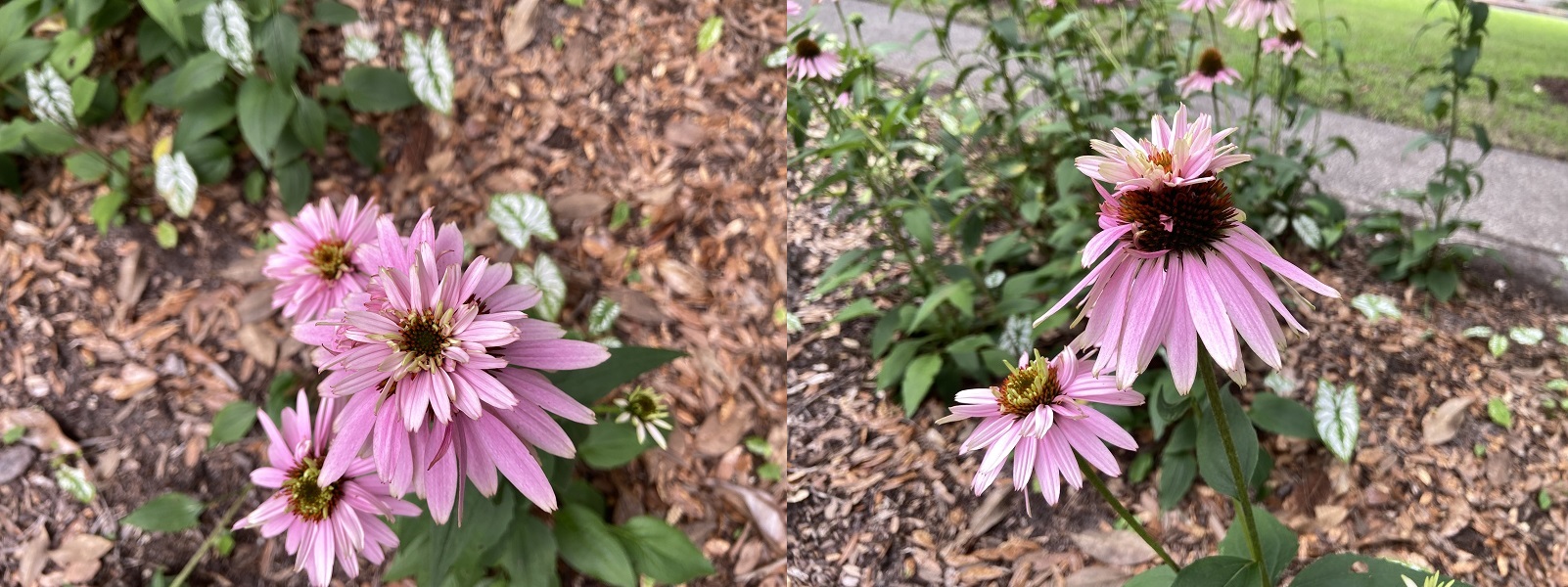
Funky Finds: 7 Weird Plants to See At Brookgreen Gardens

I’ve said it before, and I’ll say it again: I love weird plants! I don’t like having my garden filled with the same thing you see in everybody else’s yards. Sure, plants like Knock Out® roses and ‘Stella De Oro’ daylilies have earned a place in our gardens for good reasons – they’re tough, they’re pretty, and they’re easy to take care of! But I like to have something a little wacky, so when I see plants with unusual features, color me intrigued!
We’re going to take a look at a few oddball plants you can see on your next trip to Brookgreen Gardens. While they may not all be displaying their most unique features at the time of your visit, you can still glimpse what makes them so interesting right here in the pictures. Let’s dive in!
1. White Mulberry or Contorted Mulberry (Morus alba ‘Unryu’)
Leading our list is the contorted mulberry. This small tree is in the Upper Right Wing of the gardens and is a beautiful specimen with its full canopy and because of its zig-zagging limbs! While white mulberries are considered an invasive species in our area, ‘Unyru’ is a cultivar, or cultivated variety, that seldom fruits and thus does not spread problematically. Check out these limbs!

2. Farfugium or Giant Farfugium (Farfugium japonicum var. giganteum)
Giant farfugium is a plant that tends to turn some heads. Glossy, large, saddle-shaped leaves are an unexpected delight that adds a touch of whimsy. This shade-loving plant is at home in the Dorothy P. Peace Garden Room for Children, where other fun plants and sculptures join it. You can also see it in the Lower Left Wing of the gardens!

While this beauty is sure a neat sight for its foliage, it also has attractive, daisy-like flowers in the fall. This is one fully loaded plant!

3. Tree Tomato (Cyphomandra betacea)
Our next plant on the list is here in part due to its common name. While tree tomatoes are not true tomatoes, their fruits’ appearance certainly beg to differ! This plant, often grown in New Zealand as a crop, is stationed outside Bethea’s Garden's fence. Something it does have in common with tomatoes? The fruits are indeed edible! Once they ripen, they turn a deep red color, but they start green until then - just like the tomatoes we typically think of!

4. Beautyberry (Callicarpa dichotoma 'Issai')
Beautyberries are a unique-looking plant thanks to their colorful (and plentiful!) berries. The cultivar I chose to highlight is ‘Issai’ that we have in the Fountain Gardens and the Palmetto Garden. These shorter beautyberries have a lovely, flowing habit and are adorned in purple candy-like berries in the fall and winter. The clusters of fruits along the axils of the stem are profuse and a sight to behold. They're not only a feast for the eyes - but they are also a good winter food source for birds!

5. Pumpkin-On-A-Stick (Solanum aethiopicum)
Although closely related to eggplant, this isn’t a plant that’s meant to be eaten. This ornamental plant looks exactly like how it is described – pumpkins on a stick! Small fruits, shaped and colored like pumpkins, cover the stem, creating an attractive plant with a Halloween appeal! These plants are so cool; it’s hard only to keep them in the gardens. As a neat novelty, you can dry these plants and display them as a bit of indoor décor as well! You can see ours at the Old Kitchen Garden, Bethea’s Garden, Dorothy P. Peace Garden Room for Children, and the Palmetto Garden.

6. Purple Coneflower (Echinacea purpurea 'Green Twister')
Most people know a coneflower, if not by name, then by sight alone. These are wonderful plants to include in the garden and are certainly a pollinator favorite! We enjoy using these so much in our gardens that you can find them almost everywhere! However, there are many cultivars out there with some pretty distinctive features. "Green Twister" is among them. As the new flower emerges, its petals are tinged with green along the outer edges, giving it a coloration not often seen among coneflowers.

In addition to its unique early coloration, the disc flowers (or the larger center of the flower) on this cultivar are quite large and are a neat feature all on their own! You can glimpse ‘Green Twister’ throughout the gardens, including the Poetry Garden, Upper Right Wing, Lower Left Wing, and outside the Dorothy P. Peace Garden Room for Children.

7. Purple Coneflower (Echinacea purpurea 'Doubledecker')
As I said, we have a lot of coneflowers! This snazzy addition is what I call a coneflower wearing a little hat. The ‘Doubledecker’ flower starts off its first year looking like a usual coneflower. While it is pretty, it’s the second year, and beyond that, we’re really waiting for! In its second year, the flower sits with a lovely petal hat atop its head. These double-decker flowers are too cool! Check these out in the Poetry Garden and the Lower Left Wing.

There are tons of unique plants out there, and we are delighted to have so many wonders of nature on display here at Brookgreen Gardens. On your next trip to see us, keep an eye out for these and other bizarre botanicals!
See you in the Gardens!
Hours
Hours: Monday & Tuesday 9:30 AM - 5:00 PM
Wednesday - Sunday 4:00 PM - 9:00 PM
For daytime admission, gates close at 4:30 PM. For their safety and the safety of our animal collection, pets are not allowed, nor can they be left in vehicles inside Brookgreen. Service animals that have received special training to assist disabled persons are welcome.
Tickets
Daily General Admission Tickets for 7 consecutive days
Children 3 and under: Free
Children 4-12: $14
Adults 13-64: $25
Seniors 65 & Over: $23
Location
1931 Brookgreen Drive
Murrells Inlet, SC 29576
Off US Highway 17 Bypass, between Murrells Inlet and Pawleys Island on South Carolina's Hammock Coast
843-235-6000
GOOGLE DIRECTIONS